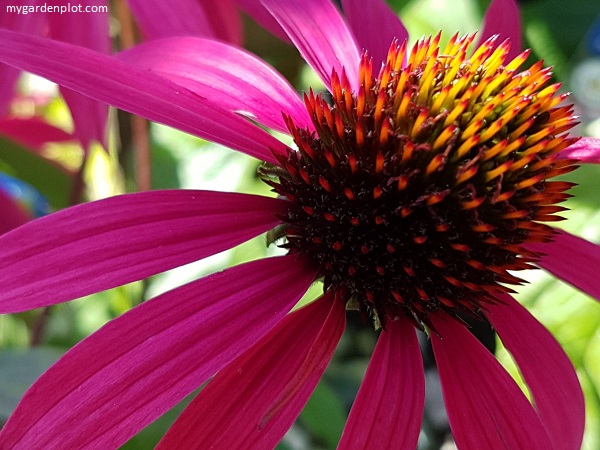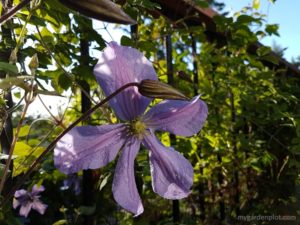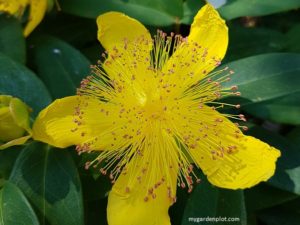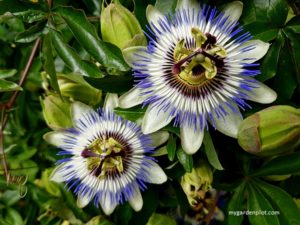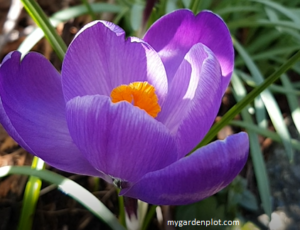About Coneflowers: How to Plant, Grow, and Care for Echinacea Flowers
The Echinacea or coneflower is one of the most popular daisy-like flowers for herbaceous borders. Native to North America, primarily central and eastern regions. This striking perennial is a top-performer in mixed summer gardens, and perfect in an autumn garden bed with beautiful fall colours. The Echinacea bloom is in its prime mid to late summer. The plant is hardy, easy care, and the flowers are long-lasting up to at least two months. And blooming well into autumn’s first frost. Here on the west coast, they bloom from July to October. Echinacea is a favourite with pollinators, attracting bees, butterflies, and birds. Following is a handy guide on how to plant and grow your Echinacea flowers. And what to do for winter care for the best regrowth the following growing season.
Echinacea Coneflower Vs Rudbeckia Coneflower
The common name ‘coneflower’ is also used to refer to rudbeckia perennials and is used interchangeably. They are closely related and similar in growing needs. Both are easy care and bloom at the same time. The Echinacea and rudbeckia flower look very similar too. However, there are very few subtle differences – mostly about the flower shape and form. Compared to the rudbeckia, the flowers tend to be bigger with Echinacea, up to 15 cm (6 inches). And they have a wider choice of colours from whites and pinks to yellows, orange and green. The most well-known is the E. purpurea (Purple Coneflower). All coneflowers are beautiful as cut flowers and they are often used in dried arrangements, especially in fall. Coneflowers are known for thriving during summer’s hottest weeks, and once established, they are drought tolerant. The name ‘echinacea’ comes from the Greek word for hedgehog – inspired by the flower’s bristly central cone, which is rather distinctive.
READ MORE: Rudbeckia Coneflower Plant Guide
Echinacea The Herbal Plant
Echinacea angustifolia (from the Aster family) and the E. purpurea (Purple Coneflower) are used for therapeutic purposes. The roots and the flower are the parts primarily used for herbal remedies. The use of Echinacea as a medicinal plant goes back many centuries. It was traditionally used by indigenous peoples in Manitoba and Saskatchewan, Canada, and the USA’s central plains. Today, Echinacea continues to be cultivated in North America and Europe and used by herbalist as an immune stimulant to enhance the body’s resistance to bacterial and viral infections.
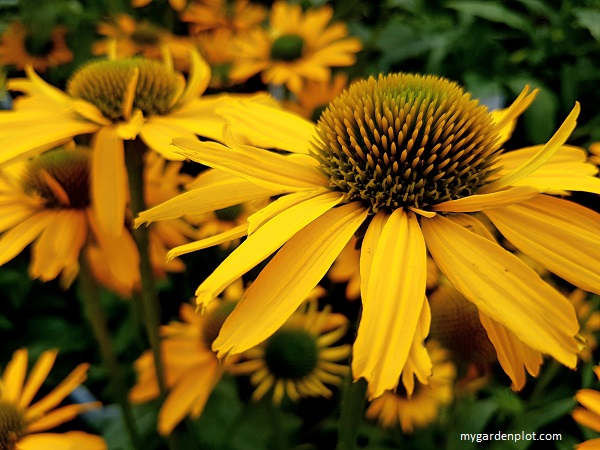
Echinacea (Coneflower) At A Glance
Type: Herbaceous Perennial (though some are short-lived – two or three years only)
Location: Full Sun
Blooming Season: Summer / Autumn
When To Prune: Cut Back Late Winter / Early Spring
Height: varies by type from 60 cm (24 inches) to 1.5 metres (5 feet)
Plant Hardiness Zones: 3 – 9
How To Plant And Grow Echinacea (Coneflower)
If growing Echinacea from seed, sow in early spring indoors or start to sow outdoors from late spring. Space them apart about 45 cm (18 inches). It usually takes a couple of years for Echinacea to flower when started by seed.
Garden centres often will have Echinacea young plants readily available from late spring, and usually with a tempting section of new hybrids. These should be planted in fertile soil in a sunny location. Add a little bone meal to get it established. Good drainage is essential. Once established, the Echinacea can handle poor soil and is drought tolerant.
The Echinacea can be divided in autumn or springtime every few years. Root cuttings can also be taken in early spring.
Echinacea can grow well in a pot for container gardening. However, the pot needs to be around 25 cm (10 inches) deep to accommodate the plant’s long taproot.
RELATED TOPIC: Plants With Daisy-Like Flowers
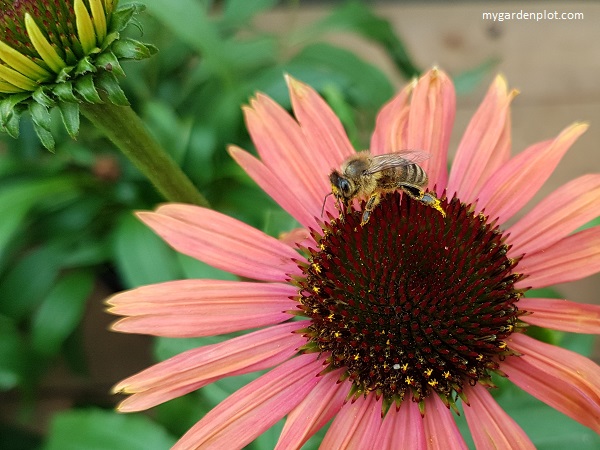
Echinacea (Coneflower) Care And Overwintering
Regular watering ensures a healthy flowering season from your Echinacea plant. Echinacea does not need additional fertilizer if planted in the ground. But for Echinacea planted in a container, add a water-soluble general fertilizer (like 10-10-10) at least once a month.
For Echinacea planted in a container, care must be taken over winter. Move the pot to a sheltered area to minimize winter damp, as wet winters can cause rotting.
Deadheading And Pruning Echinacea (Coneflower)
To extend the blooming season, keep deadheading the faded flowers. Keep in mind this will also prevent seeding. If you wish self-seeding, at the end of the season leave the flowers to mature naturally. And leave the plant as is over the winter season.
In late winter or early spring, cut back to remove the previous years stems for regrowth for the new season. Clear the area of any dead plant matter to limit any disease spread.
RECOMMENDED COMPANION PLANT: Sun loving and long blooming Russian sage
Pests And Diseases Affecting Echinacea (Coneflower)
The Echinacea is generally pest and trouble-free, and deer resistant. However, fawns always nibble any flowers in our garden, trying out everything for the first time. Spraying an environmentally friendly deer deterrent will help keep any curious young deer away from nibbling on the Echinacea flowers. Echinacea can occasionally be troubled by powdery mildew – so best to water at soil level rather than on the leaves. If you have vine weevils or leaf miners in your garden, these can attack Echinacea.
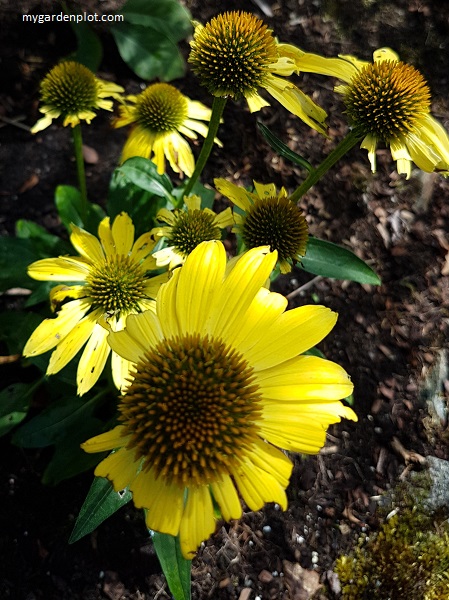
Spend more time in your summer garden! Large choice of gardening supplies for your garden bed and maintaining lawns, and fun art and sculptures for your garden and vegetable patch. Check out the latest deals for garden supplies. View the awesome deck decorations and patio furniture, and the necessary garden tools, and more.

